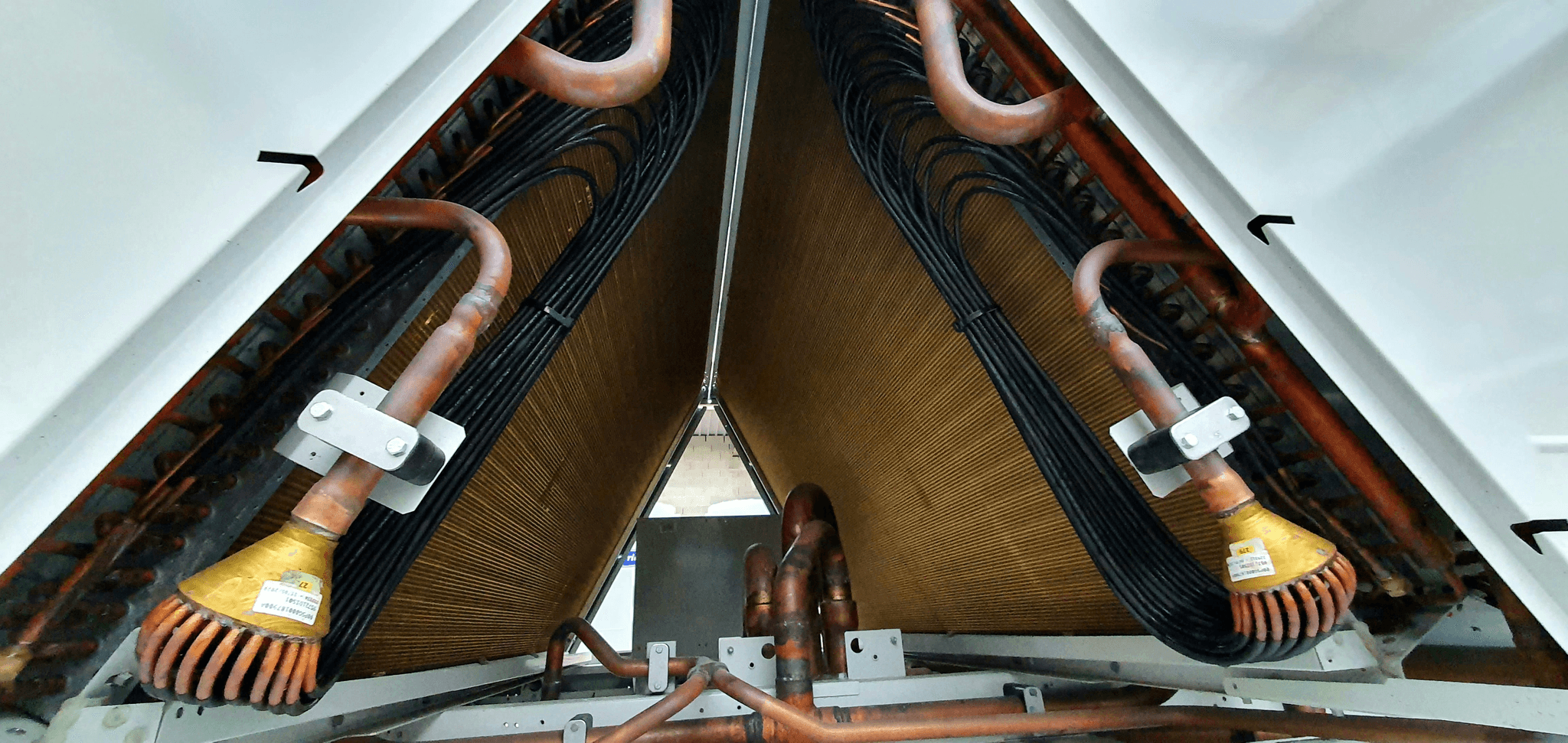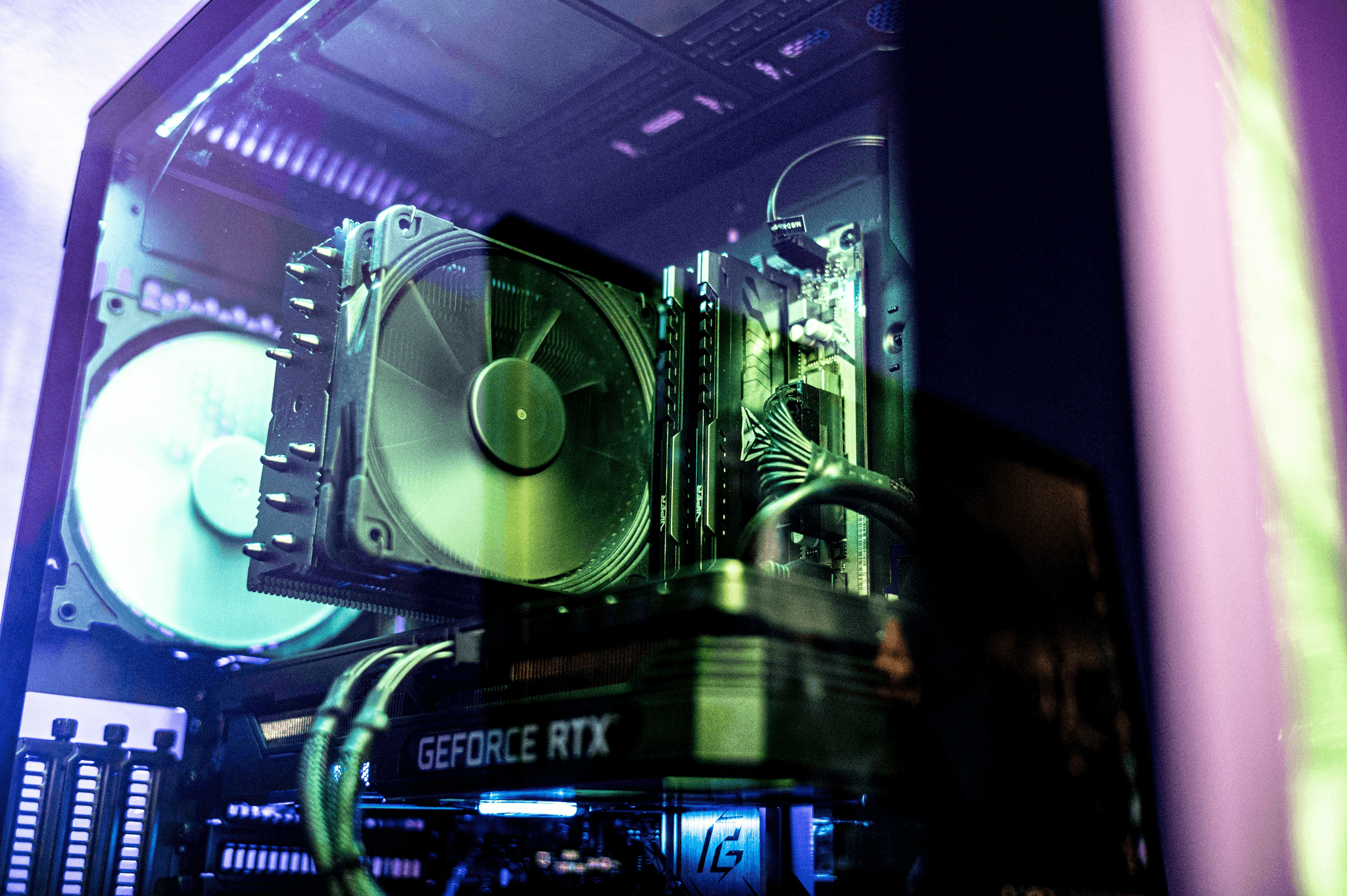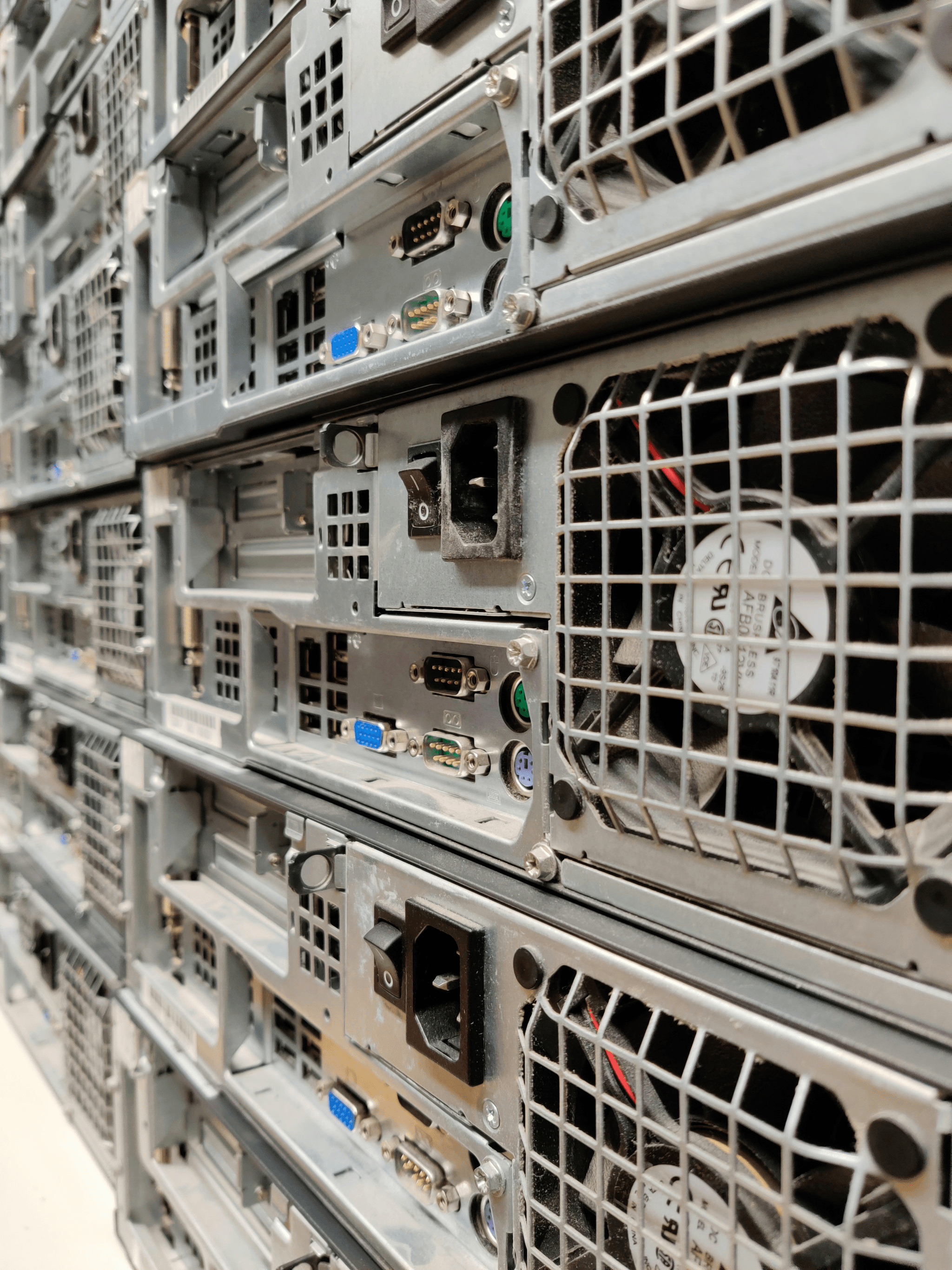Introduction

"Arctic Active Cooling. Endless Possibilities. We capture new technologies in mobile and compact cooling. Full-size cooling in a miniature design, customized to make your device stand out with innovative thermal management."
In today's digital age, data centers play a crucial role in storing and processing vast amounts of information. Efficient data center cooling systems are essential to maintain the optimal operating temperature for the servers and equipment housed within these facilities. Without proper cooling, data centers can experience downtime, reduced performance, and increased energy costs. As such, exploring different data center cooling solutions is vital to ensure the smooth operation of these critical infrastructures.
Understanding Data Center Cooling Systems
Data center cooling systems are designed to regulate the temperature and humidity levels within a facility to prevent overheating of servers and other hardware. These systems typically involve the use of air conditioning units, fans, or liquid cooling technologies to dissipate heat generated by the equipment.
Importance of Efficient Data Center Cooling
Efficient data center cooling is essential for maintaining optimal performance and prolonging the lifespan of expensive server hardware. In addition, proper cooling helps reduce energy consumption and operational costs associated with running a data center.
Exploring Different Data Center Cooling Solutions
There are various data center cooling solutions available in the market today, ranging from traditional air cooling systems to advanced liquid cooling technologies. Understanding the benefits and limitations of each solution is crucial for data center operators to make informed decisions about which system best suits their needs.
Traditional Air Cooling Systems

Traditional air cooling systems have been a staple in data centers for many years, offering several advantages. These systems are relatively easy to install and maintain, providing a cost-effective solution for many businesses. Additionally, traditional air cooling is widely available and can be quickly implemented to address immediate cooling needs.
Advantages of Traditional Air Cooling
One of the key advantages of traditional air cooling systems is their accessibility and ease of installation. Businesses can quickly set up these systems without significant downtime or disruption to operations, making them a convenient option for many data centers. Additionally, traditional air cooling solutions are often more affordable than other options, providing cost savings for businesses looking to manage their operational expenses.
Furthermore, traditional air cooling systems are relatively low maintenance, requiring minimal upkeep and servicing compared to other cooling options. This means that businesses can save on maintenance costs and allocate resources to other areas of their operations. Additionally, the simplicity of traditional air cooling systems makes them easy to troubleshoot and repair, reducing the need for specialized technical expertise and further cost savings.
Limitations of Traditional Air Cooling
While traditional air cooling systems offer numerous benefits, they also come with limitations that businesses should consider. One significant drawback is the limited efficiency of air cooling in larger data centers or facilities with high-density computing equipment. As heat loads increase, traditional air cooling may struggle to maintain optimal temperatures, leading to potential performance issues and increased energy consumption.
One additional limitation of traditional air cooling systems is the potential for hot spots to develop within the data center, leading to uneven cooling and potential equipment damage. This can result in reduced equipment lifespan and increased maintenance costs, as well as the need for additional cooling solutions to address these hot spots. As a result, businesses may find themselves spending more on cooling infrastructure than initially anticipated, impacting their overall budget and resources.
Cost Analysis of Air Cooling Systems
When evaluating data center cooling costs, it's important to consider the long-term financial implications of traditional air cooling systems. While these solutions may offer initial cost savings in terms of installation and maintenance, they can become less cost-effective over time as energy expenses rise due to inefficiencies in managing heat loads. Businesses should carefully analyze the total cost of ownership when comparing traditional air cooling with other data center cooling solutions.
By understanding the advantages and limitations of traditional air cooling systems and conducting a thorough cost analysis, businesses can make informed decisions about their data center cooling solutions while considering factors such as long-term efficiency and financial impact on operations.
Liquid Cooling Systems

Liquid cooling systems offer several benefits for data center cooling solutions. They provide superior heat transfer capabilities, allowing for more efficient cooling of high-density equipment. Additionally, liquid cooling systems are known for their ability to reduce energy consumption and improve overall energy efficiency in data centers. This makes them a popular choice for companies looking to minimize their environmental impact while maximizing the performance of their data center cooling systems.
Benefits of Liquid Cooling Systems
One of the key benefits of liquid cooling systems is their ability to efficiently remove heat from IT equipment, resulting in improved performance and extended hardware lifespan. These systems also enable higher server density and reduced air conditioning requirements, leading to significant cost savings in terms of energy consumption and maintenance. Furthermore, liquid cooling solutions contribute to a quieter and more comfortable working environment by eliminating the need for loud air conditioning units commonly associated with traditional air-cooled data centers.
Implementing Liquid Cooling in Data Centers
Implementing liquid cooling in data centers involves integrating specialized infrastructure within the facility's existing layout. This may include installing liquid-cooled racks or cabinets, as well as connecting them to an external liquid distribution system. While this process requires careful planning and investment, it ultimately results in a more efficient and sustainable data center cooling system that can accommodate evolving IT demands.
Comparing Liquid Cooling Costs with Air Cooling
When comparing the costs of liquid cooling with traditional air cooling systems, it's important to consider both initial investment and long-term operational expenses. While the upfront costs associated with implementing liquid cooling may be higher, the potential for reduced energy consumption and maintenance requirements can lead to significant cost savings over time. Additionally, advancements in liquid cooling technology have made it increasingly competitive with air-cooled solutions in terms of affordability and practicality.
Arctic Active Cooling Mini Compressor

Arctic Active Cooling's Mini Compressor is a compact and efficient cooling solution that has found unique applications in data centers. The mini compressor's small size and powerful performance make it ideal for use in server racks, providing effective cooling without taking up excessive space. Its innovative design allows for easy integration into existing data center cooling systems, making it a cost-effective and practical choice for businesses looking to optimize their cooling infrastructure.
Overview of Arctic Active Cooling's Mini Compressor
Arctic Active Cooling's Mini Compressor is a cutting-edge cooling technology designed to meet the specific needs of modern data centers. With its compact size and high-performance capabilities, the mini compressor offers a versatile and efficient solution for maintaining optimal temperature levels within server rooms. Its advanced design ensures reliable and consistent cooling, helping to protect valuable IT equipment from overheating and potential damage.
Arctic Active Cooling's Mini Compressor is not only compact and high-performing, but it also offers a cost-effective solution for data centers looking to reduce their energy consumption. By utilizing advanced technology, the mini compressor maximizes cooling efficiency while minimizing power usage, making it an environmentally friendly option for businesses looking to lower their carbon footprint. This unique feature sets it apart from traditional cooling systems and makes it an attractive choice for companies committed to sustainability.
Unique Applications of Mini Compressor in Data Centers
The mini compressor's unique applications in data centers include its ability to provide targeted cooling within server racks, effectively managing heat dissipation without requiring extensive modifications to existing infrastructure. Its versatility allows for seamless integration into various data center setups, offering a flexible solution for businesses with diverse cooling requirements. By leveraging the mini compressor's capabilities, data center operators can enhance energy efficiency and reduce operational costs.
Furthermore, the mini compressor's compact size and efficient operation make it an ideal solution for data centers with limited space or those looking to optimize their cooling infrastructure. Its ability to provide targeted cooling within server racks means that businesses can avoid overcooling large areas, resulting in significant energy savings. This cost-effective approach not only reduces operational expenses but also contributes to a more sustainable and environmentally friendly data center operation.
Cost-Effectiveness of Mini Compressor in Data Center Cooling
When considering data center cooling costs, the cost-effectiveness of Arctic Active Cooling's Mini Compressor becomes evident. Its efficient performance helps minimize energy consumption while maintaining optimal temperature levels, resulting in long-term cost savings for businesses. By investing in this innovative cooling equipment, data center operators can achieve sustainable and economical solutions that contribute to overall operational efficiency.
Furthermore, the Mini Compressor's compact design and easy installation make it a convenient and practical choice for data center operators. Its low maintenance requirements and durability ensure that businesses can rely on this cooling solution for years to come, reducing the need for frequent replacements or repairs. This not only saves costs in the long run but also minimizes downtime, allowing data centers to operate smoothly without interruptions.
Cutting-Edge Cooling Equipment

Innovations in Data Center Cooling Technology
In recent years, there have been significant advancements in data center cooling technology, with a focus on enhancing energy efficiency and reducing environmental impact. New cooling solutions such as evaporative cooling, direct fresh air cooling, and liquid immersion cooling have emerged as alternatives to traditional air-based systems. These innovations aim to address the growing demand for sustainable data center cooling solutions while maintaining optimal performance and reliability.
These advanced cooling technologies have revolutionized the way data centers manage their thermal loads, allowing for more efficient and cost-effective operations. Evaporative cooling, for example, utilizes water evaporation to remove heat from the air, significantly reducing energy consumption compared to traditional air conditioning systems. Similarly, direct fresh air cooling takes advantage of outside air to cool data center equipment, eliminating the need for energy-intensive mechanical refrigeration. As a result, data centers can achieve substantial energy savings and minimize their carbon footprint while still meeting the demanding cooling requirements of modern IT infrastructure.
Impact of Advanced Cooling Equipment on Energy Efficiency
The implementation of advanced cooling equipment in data centers has had a profound impact on energy efficiency. By utilizing innovative technologies such as variable speed drives, intelligent control systems, and thermal management strategies, data center operators can achieve substantial reductions in energy consumption and operating costs. These advancements not only contribute to a greener environment but also align with the industry's commitment to sustainability and corporate social responsibility.
With the increasing demand for data processing and storage, the need for efficient cooling solutions has become more critical than ever. Advanced cooling equipment not only reduces energy consumption but also enhances the overall performance and reliability of data centers. By incorporating these innovative technologies, data center operators can stay ahead of the curve in meeting the growing demands of their customers while minimizing their environmental impact.
Future Trends in Data Center Cooling Solutions
Looking ahead, the future of data center cooling solutions is poised for further evolution. Anticipated trends include the widespread adoption of liquid cooling systems, the integration of artificial intelligence for predictive maintenance and optimization, as well as the development of modular and scalable cooling infrastructure. As data centers continue to expand and evolve, it is imperative for organizations to stay abreast of these emerging trends to ensure their facilities are equipped with cutting-edge cooling solutions that meet their evolving needs.
Looking ahead, the future of data center cooling solutions is poised for further evolution. Anticipated trends include the widespread adoption of liquid cooling systems, the integration of artificial intelligence for predictive maintenance and optimization, as well as the development of modular and scalable cooling infrastructure. As data centers continue to expand and evolve, it is imperative for organizations to stay abreast of these emerging trends to ensure their facilities are equipped with cutting-edge cooling solutions that meet their evolving needs.
Conclusion

Choosing the Right Cooling Solutions for Your Data Center
When considering data center cooling solutions, it's crucial to assess the specific needs of your facility and choose a system that aligns with those requirements. Whether it's traditional air cooling, liquid cooling, or innovative solutions like Arctic Active Cooling's Mini Compressor, selecting the right option can significantly impact the overall efficiency and performance of your data center.
Maximizing Efficiency and Minimizing Costs with the Best Cooling System
Investing in an efficient data center cooling system not only maximizes energy efficiency but also minimizes operational costs in the long run. By carefully evaluating factors such as initial investment, maintenance expenses, and energy consumption, you can ensure that your chosen cooling system is both cost-effective and environmentally sustainable.
Investing in Sustainable Data Center Cooling Solutions
As technology continues to evolve, it's essential for data center cooling companies to prioritize sustainability in their solutions. By investing in eco-friendly options such as liquid cooling or advanced cooling equipment, data centers can reduce their carbon footprint while maintaining optimal performance levels.
In conclusion, as the demand for efficient data center cooling systems continues to grow, it's imperative for businesses to stay informed about the latest advancements in this field. By choosing the right cooling solution, maximizing efficiency and minimizing costs, and investing in sustainable options, data centers can ensure seamless operations while contributing to a greener future.
